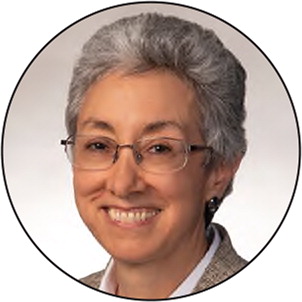
Am Fam Physician. 2021;103(8):462
Author disclosure: No relevant financial affiliations.

8:00 a.m.
I arrive at my clinic, and I'm dreading the day. My wife was having a bad morning, so I feel bad leaving her at home. She works part time at a nursing home, where she faces more direct COVID-19 safety concerns than I do, and handles our four kids attending school from home.
9:15 a.m.
My first patient is here to follow up on his diabetes, morbid obesity, and severe asthma. The patient is 15 minutes late. All of my patients have developmental disabilities, so it is often hard for them to make it to their appointments on time. I am lucky to have one hour scheduled with each patient, which I need to manage their complex medical and psychiatric issues.
10:15 a.m.
My next patient describes her shortness of breath and palpitations. I realize our virtual visit is inadequate to address her history of symptomatic atrial fibrillation. I need the patient to come to the clinic to be examined and to have an ECG performed. Unfortunately, this wastes two appointment slots and puts her at risk of exposure to COVID-19.
2:30 p.m.
I respond to an urgent message about a patient with a previous brain injury and schizophrenia. The patient refuses to wear an oxygen mask for his chronic obstructive pulmonary disease and has become aggressive toward staff at his group home. I consult with the patient's psychiatrist, and we decide to prescribe olanzapine as needed to help calm the patient so we can administer oxygen and rule out any medical causes.
4:45 p.m.
My last patient of the day says, “Dr. Jo-Jones, you're my favorite doctor. Will you always be my doctor? I don't want to see anyone else.” Today was a good day.

10:30 a.m.
My medical student has just examined the fifth patient with acute diverticulitis this month. We think it is unusual but have no other explanation than the COVID-19 pandemic. I decide to enumerate the conditions I have seen more frequently since March 2020: deep venous thrombosis, leg cellulitis, anxiety, depression, and, of course, COVID-19. During this time frame, I have also noticed a significant decrease in otitis media, strep pharyngitis, influenza, traveler's diarrhea, and well-child exams.
11:45 a.m.
An older patient presents with fatigue and anorexia. The patient is coughing and pulling his mask down because he cannot breathe. His oxygen saturation is 86% on room air, and I suspect COVID-19. I take him outside to complete my exam and send him to the emergency department.
1:30 p.m.
I examine a patient who was recently hospitalized for a fracture, but the x-ray showed numerous lytic bone lesions. The radiologist suspected metastatic disease or multiple myeloma, and the patient had a history of breast cancer. I considered doing a workup for bone metastases but instead decided to do the myeloma evaluation. I reviewed the latest AFP article to confirm the appropriate tests to order. Test results confirmed IgA kappa myeloma. Shortly afterward, she was hospitalized with COVID-19. Fortunately, the patient survived COVID-19 without needing a ventilator and initiated care with an oncologist.
3:45 p.m.
A hairstylist presents with several bright green fingernails. My medical student examines her first, quickly performs some internet research, and decides that the patient has a Pseudomonas infection resulting in chloronychia, which is caused by constant exposure to water, soaps, and detergents. We treat the patient with topical antibiotics.
7:30 p.m.
As we drive home, the office manager, my husband, gives me feedback on proper coding so that we can minimize denied claims. It is very helpful to get coding advice from an expert who is keeping our office successful during difficult times.
